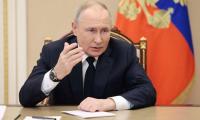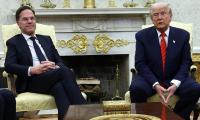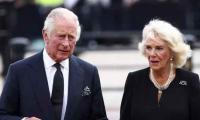The Pakistani state's ‘authority structure’ is characterized by two key features: the significant influence of the military and the federal system. Historically, the military has played a prominent role, often exerting influence behind the scenes, particularly in matters of national security and foreign policy. As a federal republic, power is divided between the central government and provincial governments. This federal system allows for a degree of autonomy at the provincial level but also ensures a degree of national unity and coordination.
Over the past 77 years, bilateral and multilateral lenders have extended loans and financial assistance to Pakistan, beyond purely economic factors, primarily based on Pakistan’s ‘authority structure’. The US, for instance, has provided approximately $70 billion in grants, and China has extended loans of over $35 billion, based on their assessments of Pakistan's ‘authority structure’. Over the past 77 years, Pakistan has received more than $130 billion in loans, largely based on Pakistan's ‘authority structure’.
Yes, Saudi Arabia, UAE and Qatar have significant bilateral ties with Pakistan but loans and financial assistance have never been based purely on economic merit but have been – and continue to be – dependent on Pakistan’s ‘authority structure’. To be certain, Saudi Arabia, UAE and Qatar provide economic support to Pakistan based on their assessments of Pakistan’s ‘authority structure’, Pakistan’s military capabilities, and Pakistan’s role in regional security.
Pakistan's strategic significance is undeniable. Its location at the crossroads of South Asia, Central Asia, China, and the Middle East provides unique geopolitical advantages. With a vast population, diverse resources, and untapped trade potential, Pakistan is a pivotal player in the region. Its extensive irrigation network is a testament to its agricultural capabilities, and its strategic position offers opportunities for economic development and regional cooperation.
Unfortunately, decades of unrealized potential and missed opportunities have hindered Pakistan's progress. However, the country possesses immense promise. With a young population, with a median age of only 20.6 years, Pakistan has a vast pool of talent and energy. Its strategic location at the crossroads of South Asia, Central Asia, and the Middle East offers unique opportunities for economic development and regional cooperation.
Yes, Pakistan continues to face a persistent external financing gap, with projected funding needs consistently exceeding incoming foreign currency for the foreseeable future. According to the IMF, Pakistan requires approximately $21 billion, $23 billion, and $22 billion in external financing over the next three fiscal years, from 2024-25 to 2026-27.
Fact 1: Pakistan faces a $66 billion funding gap over the next three years. Fact 2: Foreign inflow of dollars is drying up. Fact 3: Pakistan’s ‘authority structure’ plays a crucial role in shaping foreign loans. Fact 4: The military's influence within this structure remains a key consideration for international lenders.
Ideally, this shouldn’t be the case, but the stark reality is that multilateral and bilateral lending decisions are determined by lenders’ assessments of Pakistan’s ‘authority structure’ – and its effectiveness.
The writer is a columnist based in Islamabad. He tweets/posts @saleemfarrukh and can be reached at: farrukh15@hotmail.com
People of that time believed that an eclipse was a symbol of displeasure of gods
Debt-to-GDP ratio, which stood at 51% in 2009-10, peaked at 74% in 2019-20 and remains alarmingly high at 65% in 2023-24
Loss of biodiversity is stark reminder that urban mismanagement is not just infrastructural failure but ecological...
Strong public warning systems can also help ensure quick evacuations in places prone to fires
PPPs in Pakistan's WASH sector face significant regulatory and policy challenges that hinder their effectiveness
Instead, it would have powerful chairman with three-year term, appointed at prime minister’s discretion







